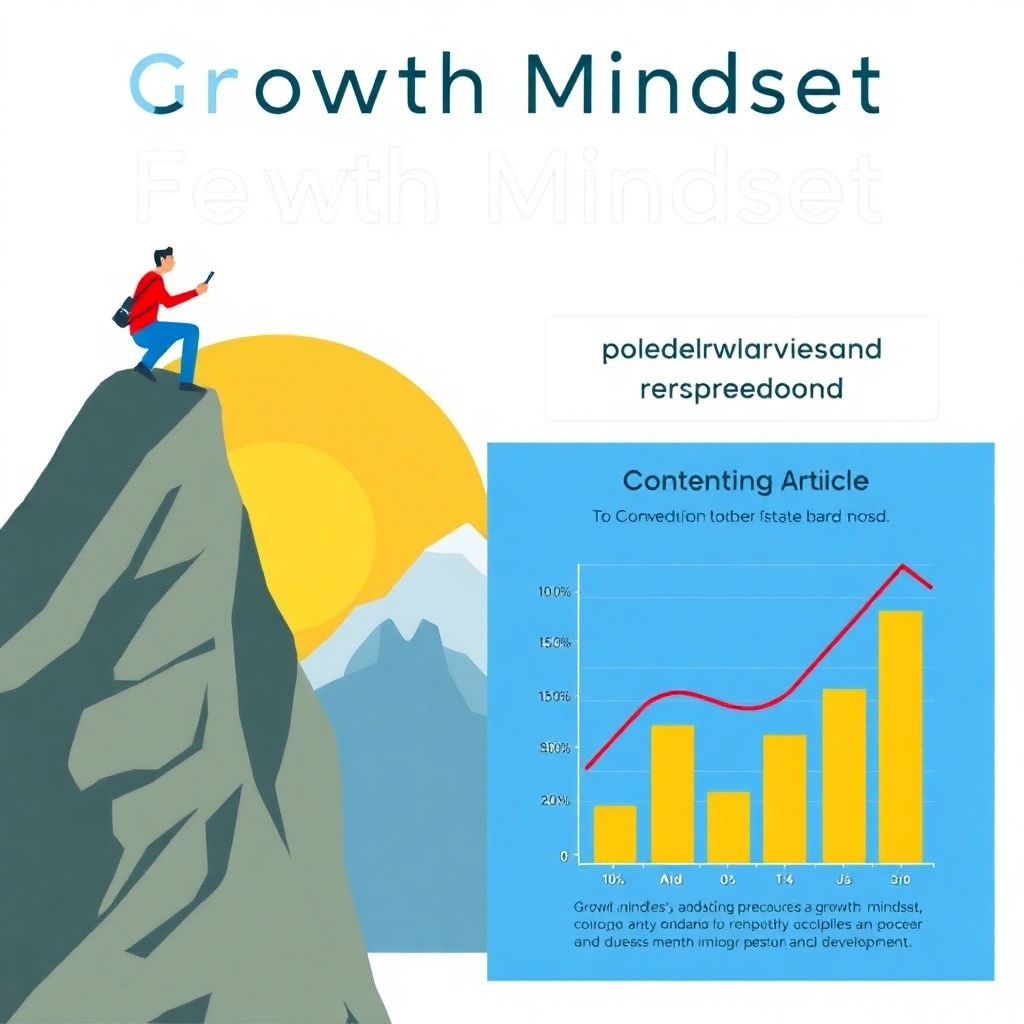Are you tired of living a mundane life? Do you dream of creating something from scratch and turning it into a successful business? If so, then you need to think like an entrepreneur. Thinking like an entrepreneur requires a mindset shift. It’s about being proactive, taking risks, and embracing uncertainty. Entrepreneurial thinking is not just for entrepreneurs; it’s for anyone who wants to make a meaningful impact, and achieve their goals. In this article, we’ll explore the key characteristics of entrepreneurial thinking and provide practical tips on how to cultivate this mindset.

Table of Contents
HOW TO THINK LIKE AN ENTREPRENEUR
Here are some key strategies to help you think like an entrepreneur:
Cultivate a Growth Mindset
1. Embrace challenges: View obstacles as opportunities for growth and learning.
2. Be open to learning: Continuously seek knowledge, skills, and experiences that can help you improve.
3. Focus on progress: Celebrate small wins and acknowledge progress, rather than fixating on perfection.
Develop a Visionary Perspective
1. Think big: Envision a bold, exciting future for your business or project.
2. Identify opportunities: Recognize emerging trends, technologies, and markets that can help you achieve your vision.
3. Create a clear plan: Break down your vision into actionable, measurable steps.
Foster a Culture of Innovation
1. Encourage experimentation: Test new ideas, products, and services to stay ahead of the curve.
2. Embrace failure: View failures as valuable learning experiences that can inform future decisions.
3. Stay curious: Continuously ask questions, seek feedback, and explore new possibilities.
Practice Resilience and Adaptability
1. Stay flexible: Be willing to pivot or adjust your plans in response to changing circumstances.
2. Manage risk: Assess potential risks and develop strategies to mitigate them.
3. Maintain a positive attitude: Stay optimistic, even in the face of challenges or setbacks.
Develop Strong Problem-Solving Skills
1. Analyze problems: Break down complex problems into manageable components.
2. Generate creative solutions: Think outside the box to develop innovative solutions.
3. Evaluate and refine: Continuously assess and refine your solutions to ensure they meet your goals.
Build a Strong Network
1. Cultivate relationships: Nurture relationships with mentors, peers, and potential partners.
2. Seek feedback: Ask for constructive feedback to help you improve and grow.
3. Collaborate: Work with others to share knowledge, resources, and expertise.
Stay Focused and Motivated
1. Set clear goals: Establish specific, measurable, achievable, relevant, and time-bound (SMART) goals.
2. Create a schedule: Prioritize tasks and manage your time effectively.
3. Celebrate milestones: Acknowledge and celebrate your achievements along the way.
WHAT IS ENTREPRENEURIAL THINKING?
Entrepreneurial thinking is a mindset that combines creativity, resilience, and resourcefulness. It’s the ability to see opportunities where others see obstacles, to take calculated risks, and to adapt to changing circumstances. Entrepreneurial thinkers are not afraid to challenge the status quo, to question assumptions, and to explore new possibilities.
KEY CHARACTERISTICS OF THINKING LIKE AN ENTREPRENEUR
1. Curiosity: Entrepreneurial thinkers are curious and love to learn. They ask questions, seek feedback, and explore new ideas.
2. Creativity: Entrepreneurial thinkers are creative problem-solvers. They think outside the box, challenge assumptions, and find innovative solutions.
3. Resilience: Thinking like an entrepreneur are resilient and adaptable. They bounce back from setbacks, learn from failures, and adjust to changing circumstances.
4. Risk-Taking: Entrepreneurial thinkers are willing to take calculated risks. They weigh the pros and cons, assess the potential rewards, and make informed decisions.
5. Resourcefulness: Entrepreneurial thinkers are resourceful and agile. They find ways to overcome obstacles, leverage resources, and achieve their goals.
HOW TO DEVELOP ENTREPRENEURIAL THINKING
1. Be Proactive
Entrepreneurs are proactive, not reactive. They don’t wait for opportunities to come to them; they create their own. To think like an entrepreneur, you need to be proactive. Take initiative, set goals, and work towards achieving them.
2. Take Calculated Risks
Entrepreneurs are risk-takers. They’re not afraid to take the road less traveled. However, they also know how to calculate risks. To think like an entrepreneur, you need to be willing to take calculated risks. Weigh the pros and cons, assess the potential outcomes, and make informed decisions.
3. Embrace Uncertainty
Entrepreneurs are comfortable with uncertainty. They know that the only constant in life is change. To think like an entrepreneur, you need to be comfortable with uncertainty. Don’t be afraid to pivot or adjust your plans when circumstances change.
4. Focus on Solutions, Not Problems
Entrepreneurs are solution-focused. They don’t get bogged down by problems; they look for solutions. To think like an entrepreneur, you need to focus on solutions, not problems. Identify the challenges, brainstorm solutions, and take action.
5. Be Adaptable
Entrepreneurs are adaptable. They’re able to adjust to changing circumstances and pivot when necessary. To think like an entrepreneur, you need to be adaptable. Stay flexible, be open to new ideas, and be willing to adjust your plans when circumstances change.
6. Take Responsibility
Entrepreneurs take responsibility for their actions. They don’t blame others or make excuses; they own up to their mistakes. To think like an entrepreneur, you need to take responsibility for your actions. Own up to your mistakes, learn from them, and move forward.
7. Stay Curious
Entrepreneurs are curious. They’re always learning, always growing, and always looking for new opportunities. To think like an entrepreneur, you need to stay curious. Ask questions, seek feedback, and stay open to new ideas.
WHAT ARE THE BENEFITS OF ENTREPRENEURIAL THINKING?
Personal Benefits
1. Increased confidence: Developing entrepreneurial thinking skills can boost self-confidence and self-efficacy.
2. Improved problem-solving: Entrepreneurial thinking enhances creativity, critical thinking, and problem-solving abilities.
3. Enhanced adaptability: Entrepreneurial thinkers are better equipped to adapt to changing circumstances and navigate uncertainty.
4. Greater resilience: Entrepreneurial thinking fosters resilience, helping individuals bounce back from setbacks and failures.
Professional Benefits
1. Innovative solutions: Entrepreneurial thinking drives innovation, leading to new ideas, products, and services.
2. Competitive advantage: Companies that foster entrepreneurial thinking can gain a competitive edge in the market.
3. Improved decision-making: Entrepreneurial thinking enhances decision-making skills, enabling individuals to make informed, calculated risks.
4. Increased productivity: Entrepreneurial thinkers are often more productive, efficient, and effective in their work.
Business Benefits
1. Growth and expansion: Entrepreneurial thinking can lead to business growth, expansion, and increased revenue.
2. Innovation and disruption: Companies that encourage entrepreneurial thinking can disrupt markets and create new opportunities.
3. Talent attraction and retention: Organizations that foster entrepreneurial thinking can attract and retain top talent.
4. Improved customer satisfaction: Entrepreneurial thinking can lead to customer-centric solutions, improving customer satisfaction and loyalty.
HOW DOES ENTREPRENEURIAL THINKING IMPACT BUSINESS?
Innovation and Growth
1. New ideas and opportunities: Entrepreneurial thinking encourages experimentation, creativity, and risk-taking, leading to innovative products, services, and business models.
2. Growth and expansion: Entrepreneurial thinking drives business growth by identifying new markets, customers, and revenue streams.
Competitive Advantage
1. Unique value proposition: Entrepreneurial thinking helps businesses differentiate themselves from competitors by creating unique value propositions.
2. Adaptability and resilience: Entrepreneurial thinking enables businesses to adapt quickly to changing market conditions, staying ahead of the competition.
Improved Decision-Making
1. Calculated risk-taking: Entrepreneurial thinking encourages informed risk-taking, weighing potential rewards against potential risks.
2. Data-driven decision-making: Entrepreneurial thinking promotes data-driven decision-making, using metrics and analytics to inform business decisions.
Enhanced Customer Experience
1. Customer-centric approach: Entrepreneurial thinking puts customers at the forefront, driving businesses to create customer-centric products, services, and experiences.
2. Continuous improvement: Entrepreneurial thinking encourages businesses to continually gather feedback and improve their offerings.
Increased Productivity and Efficiency
1. Lean and agile operations: Entrepreneurial thinking promotes lean and agile operations, streamlining processes and eliminating waste.
2. Innovative problem-solving: Entrepreneurial thinking encourages innovative problem-solving, finding creative solutions to complex challenges.
Talent Attraction and Retention
1. Attracting top talent: Entrepreneurial thinking creates a culture of innovation and experimentation, attracting top talent who crave autonomy and creativity.
2. Retaining talent: Entrepreneurial thinking fosters a culture of continuous learning and growth, retaining talent by providing opportunities for professional development.
Improved Financial Performance
1. Increased revenue: Entrepreneurial thinking drives revenue growth through innovation, expansion, and improved customer experiences.
2. Improved profitability: Entrepreneurial thinking promotes cost savings, efficiency gains, and improved productivity, leading to increased profitability.
4 STEPS OF THINKING IN ENTREPRENEURSHIP
Step 1: Opportunity Recognition
1. Identify problems or gaps: Recognize areas where customers are not being served or where there are inefficiencies in the market.
2. Research and analyze: Gather data and insights to validate the opportunity and understand the market.
3. Idea generation: Brainstorm potential solutions to address the opportunity.
Step 2: Creative Problem-Solving
1. Challenge assumptions: Question existing norms and conventions to create innovative solutions.
2. Think outside the box: Explore unconventional ideas and approaches.
3. Prototype and test: Develop and refine prototypes to validate assumptions and gather feedback.
Step 3: Risk Assessment and Mitigation
1. Evaluate risks and challenges: Identify potential risks, challenges, and obstacles.
2. Assess potential rewards: Weigh the potential benefits against the risks.
3. Develop contingency plans: Create backup plans to mitigate potential risks and challenges.
Step 4: Strategic Planning and Action
1. Set clear goals and objectives: Define specific, measurable, achievable, relevant, and time-bound (SMART) goals.
2. Develop a business plan: Create a comprehensive plan outlining strategy, tactics, and financial projections.
3. Take action and iterate: Implement the plan, monitor progress, and make adjustments as needed.
HOW ENTREPRENEURS THINK STRUCTURALLY
Opportunity Recognition
1. Identifying problems: Entrepreneurs recognize problems or gaps in the market.
2. Spotting trends: They identify emerging trends, technologies, or shifts in consumer behavior.
3. Conducting market research: Entrepreneurs gather data and insights to validate their ideas.
Idea Generation
1. Brainstorming: Entrepreneurs generate a wide range of ideas, often through brainstorming sessions.
2. Mind mapping: They visualize their ideas, creating mind maps to connect concepts and identify relationships.
3. Free writing: Entrepreneurs write down their thoughts, ideas, and reflections without judgment.
Risk Assessment
1. SWOT analysis: Entrepreneurs evaluate the strengths, weaknesses, opportunities, and threats associated with their idea.
2. Risk-reward analysis: They weigh the potential risks against the potential rewards.
3. Scenario planning: Entrepreneurs imagine different scenarios, anticipating potential outcomes and developing contingency plans.
Resource Allocation
1. Bootstrapping: Entrepreneurs allocate their own resources, such as time, money, and network.
2. Fundraising: They seek external funding, such as investments, loans, or grants.
3. Partnerships and collaborations: Entrepreneurs form strategic partnerships to access new resources, expertise, or markets.
Action Planning
1. Setting clear goals: Entrepreneurs define specific, measurable, achievable, relevant, and time-bound (SMART) goals.
2. Creating a business plan: They develop a comprehensive business plan, outlining their strategy, tactics, and financial projections.
3. Prioritizing tasks: Entrepreneurs prioritize their tasks, focusing on the most critical activities that drive progress.
Continuous Learning
1. Staying up-to-date with industry trends: Entrepreneurs stay informed about the latest developments, technologies, and innovations in their industry.
2. Seeking feedback and mentorship: They solicit feedback from customers, peers, and mentors, using this feedback to refine their approach.
3. Reflecting and adjusting: Entrepreneurs regularly reflect on their progress, adjusting their strategy as needed to stay on track.
ENTREPRENEURIAL STYLE
Here are some key aspects of entrepreneurial style:
Visionary
1. Innovative thinking: Always looking for new and better ways to do things.
2. Risk-taking: Willing to take calculated risks to achieve their vision.
3. Inspiring others: Able to motivate and inspire others to work towards a common goal.
Strategic
1. Goal-oriented: Clearly defines and works towards achieving specific goals.
2. Analytical thinking: Able to analyze data and make informed decisions.
3. Planning and organization: Develops and implements plans to achieve their goals.
Collaborative
1. Team-building: Able to build and lead high-performing teams.
2. Communication: Effective communicator who can articulate their vision and ideas.
3. Partnerships and networking: Able to form strategic partnerships and build a strong network.
Adaptive
1. Flexibility: Able to adapt to changing circumstances and pivot when necessary.
2. Resilience: Able to bounce back from setbacks and failures.
3. Continuous learning: Committed to ongoing learning and self-improvement.
Decisive
1. Confident decision-making: Able to make informed, decisive decisions.
2. Action-oriented: Willing to take action and implement their decisions.
3. Accountability: Takes ownership and accountability for their decisions and actions.
Authentic
1. Passion and purpose: Driven by a strong passion and sense of purpose.
2. Authentic leadership: Leads with integrity, transparency, and authenticity.
3. Emotional intelligence: Self-aware, empathetic, and able to manage their emotions.
ENTREPRENEURIAL AND COMMERCIAL THINKING
Entrepreneurial Thinking
1. Innovative: Focuses on creating new products, services, or processes.
2. Risk-taking: Willing to take calculated risks to achieve goals.
3. Adaptable: Able to pivot and adjust plans in response to changing circumstances.
4. Opportunistic: Seeks out new opportunities and partnerships.
5. Visionary: Has a clear vision for the future and is able to inspire others.
Commercial Thinking
1. Market-driven: Focuses on meeting customer needs and creating value.
2. Financially savvy: Understands financial metrics and makes decisions based on ROI.
3. Competitive: Analyzes competitors and develops strategies to stay ahead.
4. Operational efficiency: Focuses on streamlining processes and reducing costs.
5. Scalable: Develops business models that can scale and grow.
ENTREPRENEURIAL THINKING EXAMPLES
some examples of entrepreneurial thinking from different industries and individuals:
Technology
1. Steve Jobs (Apple): Revolutionized the music industry with the iPod and transformed the smartphone market with the iPhone.
2. Mark Zuckerberg (Facebook): Created a social media platform that changed the way people connect and interact.
E-commerce
1. Jeff Bezos (Amazon): Disrupted the retail industry by creating an online shopping experience that offers convenience, speed, and competitive pricing.
2. Sara Blakely (Spanx): Identified a gap in the market for comfortable, slimming undergarments and created a brand that became a household name.
Sustainability
1. Patagonia’s Yvon Chouinard: Pioneer in sustainable manufacturing and environmental responsibility, demonstrating that business can be a force for good.
2. Tesla’s Elon Musk: Accelerating the world’s transition to sustainable energy through innovative electric vehicles and clean energy solutions.
Social Impact
1. Muhammad Yunus (Grameen Bank): Founded a microfinance institution that empowers millions of people in developing countries to lift themselves out of poverty.
2. Blake Mycoskie (TOMS): Created a socially responsible business model that provides shoes, sight, and water to those in need.
Food and Beverage
1. Howard Schultz (Starbucks): Transformed the coffee shop experience, creating a global brand that combines high-quality products with a unique customer experience.
2. Gary Hirshberg (Stonyfield Farm): Pioneered the organic yogurt market, demonstrating that healthy, sustainable food can be a successful business model.
These examples illustrate entrepreneurial thinking in action, showcasing innovative solutions, risk-taking, and a willingness to challenge the status quo.
Thinking like an entrepreneur requires a mindset shift. It’s about being proactive, taking calculated risks, embracing uncertainty, resourcefulness, curiosity and focusing on solutions. By cultivating these characteristics, you’ll be well on your way to thinking like an entrepreneur. Remember, entrepreneurship is a mindset, not just a job title. Remember, entrepreneurial thinking is not just for entrepreneurs; it’s for anyone who wants to make a difference and achieve their dreams.









